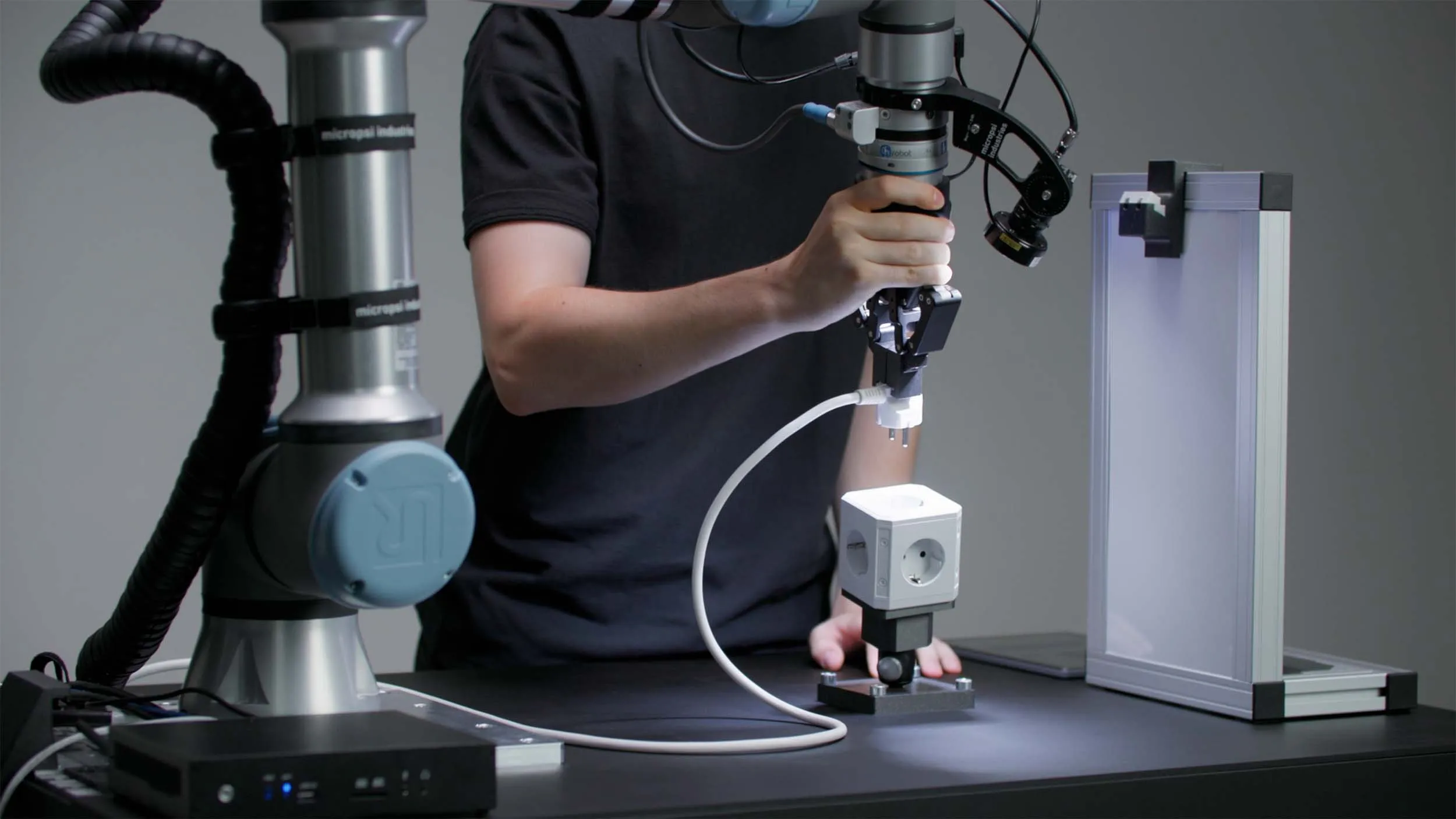
AI motion-guidance
for robots
MIRAI is AI-vision software that enables industrial robots to perform automation tasks otherwise considered too complex to solve.
More reliable, more
scalable, easier to deploy
With MIRAI 2, it is even easier to enable robots to reliably perform automation tasks with variance and deploy the system across robots fleets.
Why MIRAI
Guaranteed success
Our expert engineers work with you to deploy a robust, scalable, MIRAI-powered automation solution in your factory.
No CAD data required
Also no camera calibration, controlled light, or visual-feature predefinition. MIRAI reliably handles variance in real time.
Application flexibility
Industrial robots powered with the MIRAI system can be easily trained and retrained for various production tasks.
Enable robots to handle
variance in manufacturing






Forget conventional
vision systems
Unlike standard computer-vision systems,
the MIRAI system:
- Handles reflective and transparent objects
- Adapts a robot’s path in changing conditions
- Deals with dust, dirt, and grime
- Does not require CAD data
- Tracks moving objects in real time
How MIRAI works
Application design
Analyze the task and the sources of variance that MIRAI will be trained to handle in that task. Equip your robot with a suitable 2D camera, an end-effector, and other needed hardware.
Train your MIRAI-equipped robot
Familiarize the system with the movement you want it to perform and the variance it may come across. As you do, a camera records the scene.
Compute the skill
We run the image data through an AI algorithm to prepare a mathematical model, called a “skill.” A skill tells the robot how to behave while performing an action, no matter the situation.
Execute your skill
The MIRAI-guided robot can now perform your action and handle changing situations. You use the MIRAI skill as part of an overall task, like picking or insertion. Skills are tested and refined through further training.
Deploy MIRAI at scale
Share skills with multiple robots, at the same site or elsewhere.

Robust AI-vision technology
Robots guided by MIRAI can react to changing factory conditions. The MIRAI software consists of robot-control code on an edge device, a cloud-based machine learning service, and an app for training the system.

Exceptional support
A customer-success team will work with you to set up MIRAI in your factory, deploy the automation solution, and keep it live 24/7. We can also help you to procure any needed hardware for the integration, including suitable 2D cameras and edge devices.

Current robot platforms



Using MIRAI, we don’t have the need for experienced programmers. We have even managed to optimize cycle times by 20% on our own. That's exactly the flexibility we need.
MIRAI 2
It is now easier and quicker to enable robots to reliably perform automation tasks in changing conditions and share MIRAI skills across robot fleets. MIRAI skills tell robots how to behave when they perform your desired actions, no matter the variance they encounter. Want to discuss your application?
Higher reliability
MIRAI 2 runs on PCs of the highest industry standards. The new system also uses innovative ways to collect training data and detect unexpected situations.
Easier deployment
Training and deploying MIRAI-guided robots in your factory has gotten simpler and faster. Plus, MIRAI no longer requires an FT sensor, meaning lower costs and more robust performance.
Robot-fleet scalability
You can now quickly and easily share MIRAI skills with an entire fleet of robots, on the same site or across others. Enable numerous robots to perform an automation task with variance.
New features
Semi-automatic data recording
During the training phase, let MIRAI automatically record the relevant data used to generate MIRAI skills, instead of guiding the robot by hand. This reduces workload and leads to more reliable automation.
No force-torque sensor
You can now train and run most skills without a force-torque sensor. This lowers cost, simplifies tool geometry and cabling setup, and overall makes MIRAI skills easier to train and more robust during deployment.
Robot skill-sharing
Transfer MIRAI skills to multiple robots deployed at the same site or others. The MIRAI system can also handle small differences in conditions by recording data from multiple installations.
Abnormal condition detection
MIRAI can be configured to stop skills when unexpected conditions are encountered, allowing users to handle these exceptions in their robot program or alert a human operator.
Industrial PC
The MIRAI system now runs on industrial-grade hardware (rail-mount, DC 24V power supply) of the highest quality standards, resulting in higher dependability in rough factory conditions.






%206.webp)